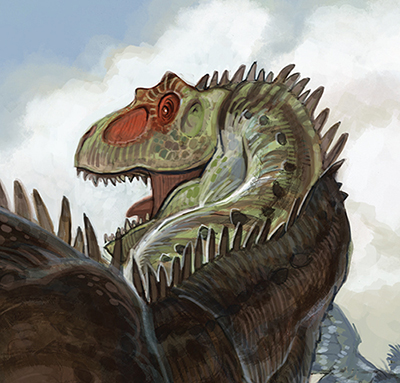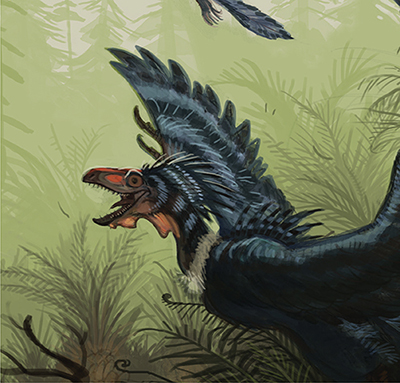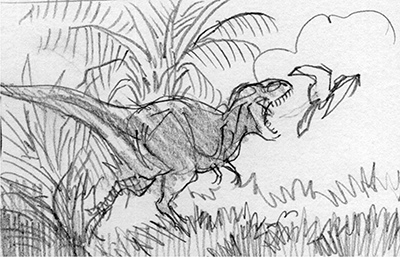
When designing the image of the archaeopteryx, I wanted to illustrate some of the characteristic behavior we often see in modern birds. My goal of this painting was to illustrate some scale since the archaeopteryx is so small compared to many other dinosaurs of its day. Since paleontologists believe it to be capable of only short flight, I imagined a rookery of animals nesting together on the ground like modern pheasant or quail in a thicket of cycads.
In paleoart, it is common for artists to depict big monster combat scenes among large dinosaurs, which is cool, but probably not always accurate. Here, I chose to have the archaeopteryx nests raided by a large carnivore theropod. I imagined the archaeopteryx taking flight and attempting to attack the predator like when a smaller birds’ nest is attacked by a modern-day hawk or raptor. Unless its choice of prey is old or injured, or the carnivore is working in a pack, it seems more likely that a large carnivore would attack smaller animals to avoid injury. An allosaurus would probably want to attack an adult stegosaurus no more than a modern lion would attack a rhinoceros, but perhaps an archaeopteryx would make a nice snack.

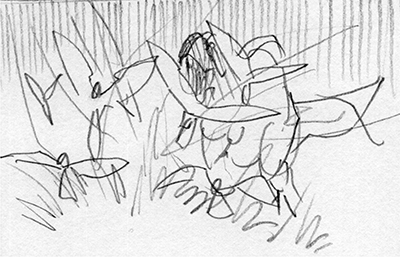
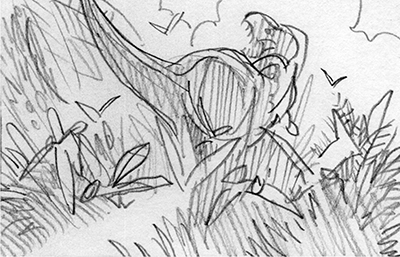
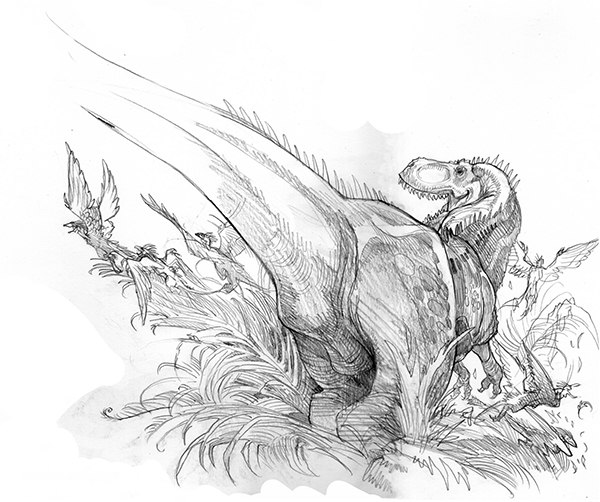
Use your thumbnail sketches to establish the composition of the carnivore flushing out the nest of birds. Rendering several archaeopteryx in a variety of positions gives the scene a 3-D effect and establishes a sense of motion.
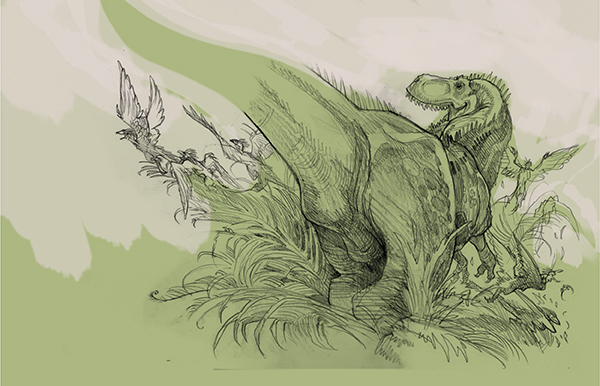
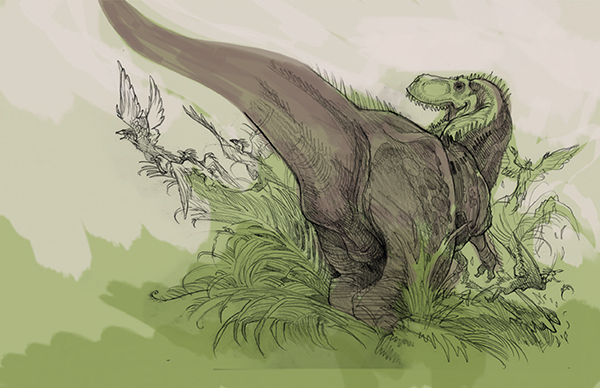

With such an unusual composition, strong lighting is necessary to define the shapes. A bright light-blue background with a saturated dark-green warm foreground helps add depth to the design. I used broad brushes to define the scene with shapes of light and color.
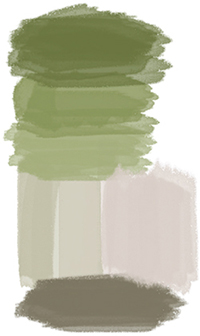
Color Palette
The allosaurus was a large, agile apex predator of the Jurassic Era able to sprint up to 20mph (32km). Juvenile allosaurus presented more danger to smaller ground-dwelling prey, giving the flying archaeopteryx a great advantage at survival.
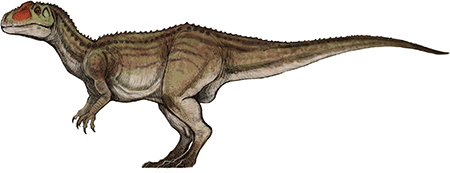
Allosaurus fragilis
Length 30 feet (9m)

Making alterations to an image is fairly simple when using a computer, but is also normal when working traditionally. At this point in the illustration I felt there needed to be more archaeopteryx in the foreground so the animal could be seen in better detail. Here I digitally imported three sketches directly into my painting, then scaled, rotated and positioned them until I was happy with their size and location.
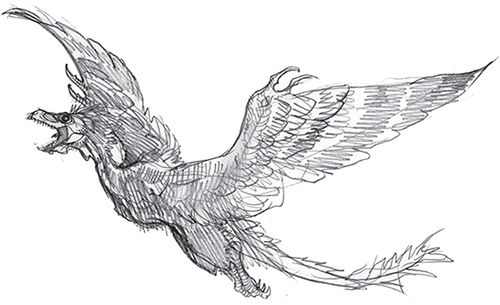
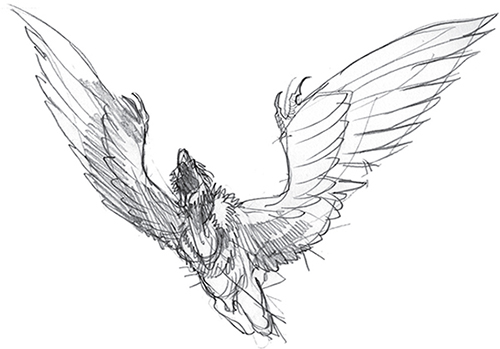
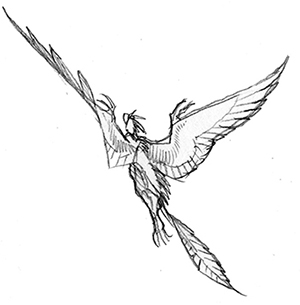
Sketches of archaeopteryx that will be digitally scanned and added to the image. Use a Lasso tool to outline the image and paste it into the drawing. Then simply merge the layers and rework the painting in Multiply mode.
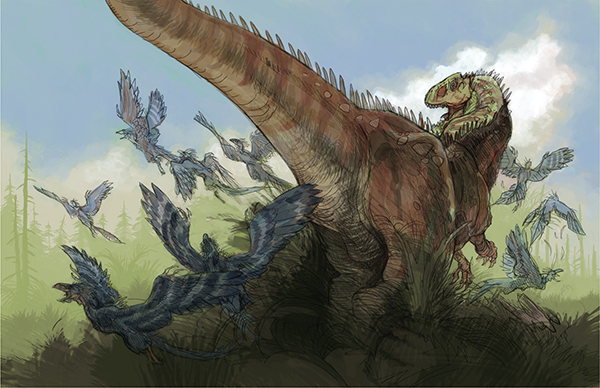
Alterations to the head and arms of the carnosaur are made to turn it from a T-rex into a young allosaurus. T-rex was not alive in the Jurassic period and is too big to be in this scale.
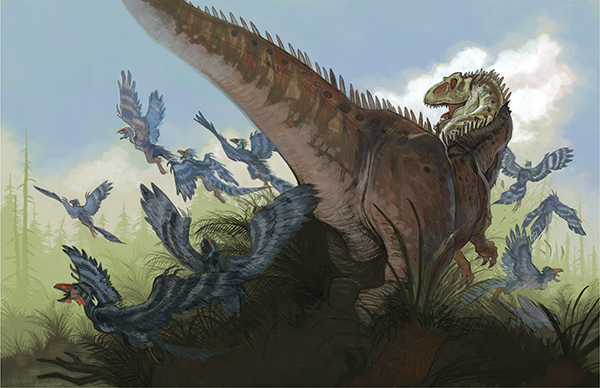
The foreground elements in this image are fairly extensive, with a total of ten archaeopteryx depicted in the picture. The animals in the foreground are more detailed than in the background, adding to the sense of depth.
When you start your drawing, sketch with general forms so you can make alterations regarding proportion and anatomy early on, rather than later when the drawing is almost finished. Slowly define the details such as the tongue, teeth and feathers, then move on to the shadows. Once the drawing is complete, color it in with the medium of your choice.
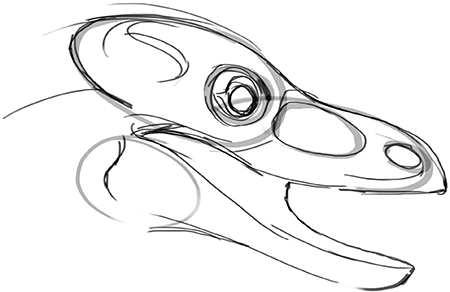
1
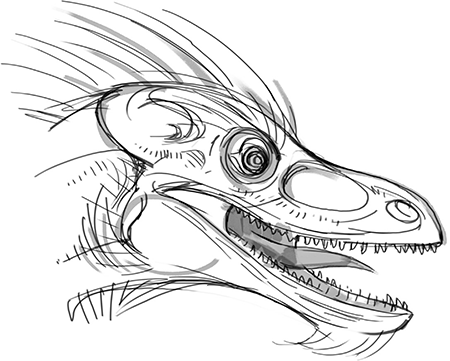
2
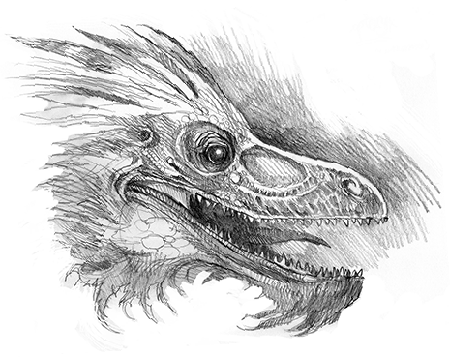
3

4

Add the final details to the scene. Since there is no way to know the exact color of the feathered plumage on an archaeopteryx, this is where the artist’s imagination is important. For this painting, I based the colors on a blue jay since they are a large and aggressive insectivore, much like archaeopteryx would have been. Cycad plants in the extreme foreground help create depth in the picture.
